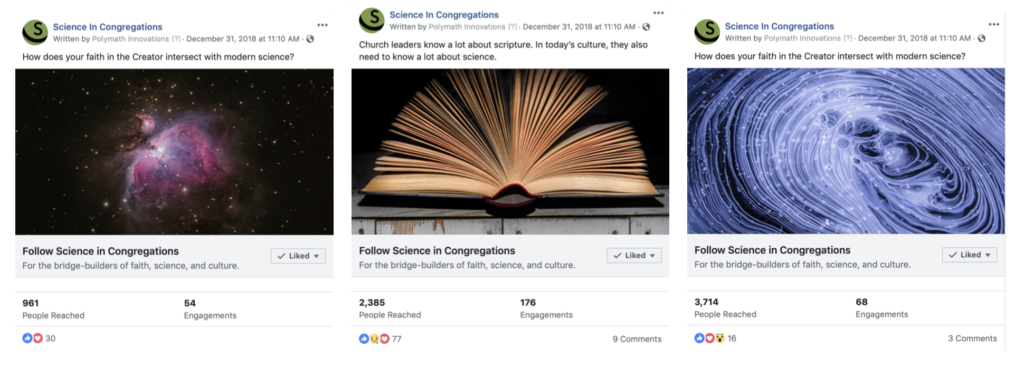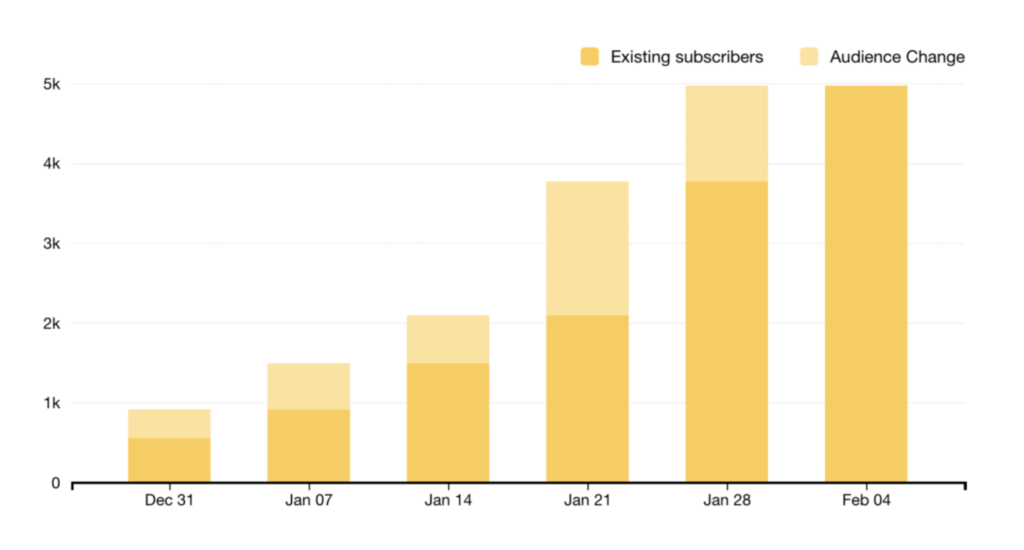Email has been around for decades, but remains one of the most important marketing channels—especially for re-engaging people who already know you.
Email, therefore, is a great way to turn a one-time interaction into an ongoing relationship. When a young organization approached Polymath about quickly growing their email list, they had launched a site and weekly email newsletter that was slowly gaining traction, but it was time to scale up. Within seven weeks, we went from 1,000 subscribers to 5,000… Here’s how.
Get to know your audience
As with every project at Polymath, we began by learning. We needed to understand the different segments of the audience and what attracted them. We needed to figure out where they are likely to be reached and what kind of messaging they would respond to. With some initial hypotheses around messaging and creative, a testing process became central to our strategy.
In the first half of the campaign, we ran tests of 113 ad variations to over 120,000 people on Facebook, which we determined to be the key platform for the demographic. However, we spent conservatively during this phase, reserving most of the budget for the second half.

Over these first few weeks, the landing page we developed attracted 2,800 people, 1,220 of whom subscribed to the newsletter (that’s a whopping 43% conversion rate). With those numbers, we were quickly able to determine that certain types of imagery and messaging angles received far better responses than others.
For example, audiences tended to prefer copy that had an optimistic and positive tone, rather than one based on fear and conflict. The organization’s mission is to help people strengthen their faith through engagement with science. So, we saw that a message like, “Explore the mysteries of science and faith” did far better than “Stop the war between science and faith.” Simply implying there was a conflict tended to reduce effectiveness.
Doubling down
Email is a great way to turn a one-time interaction into an ongoing relationship.
For the second half of the campaign, we focused on the creative approach that proved most effective, then ramped up spending with the large reserves. One of the newer ads, developed from insights gained in the first phase, proved so successful that it accounted for 40% of the Facebook likes we earned throughout the campaign (likes were a secondary objective).
The graph below shows the weekly increase of email subscribers, with the largest numbers coming in over the final weeks. The results blew past our original goals, with a final tally of around 5,000 subscribers.

We also surpassed our 10,000 Facebook page likes goal by nearly 3,000 more likes, and reduced cost-per-like from $1.78 to just 29 cents.
The success of this campaign proved the viability of the organization’s concept and led to a strong creative partnership with our agency. This included a full rebrand, new website, overview video, and a second campaign to expand their audience further.
Data is your friend
The traditional model of advertising was to gather ’round a table and come up with a brilliant concept that will (hopefully) land with the audience, then test it with focus groups. And we certainly do all that, too.
However, nothing can replace a real-world trial run to see how actual audiences respond. Our “test, iterate, scale” approach is one we often employ in both our creative work and marketing campaigns because it gives us more reliable data. Market research gets you half way, but testing with actual ads is an important first step to validate the effectiveness of concepts before you make a big investment.
—